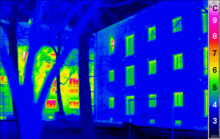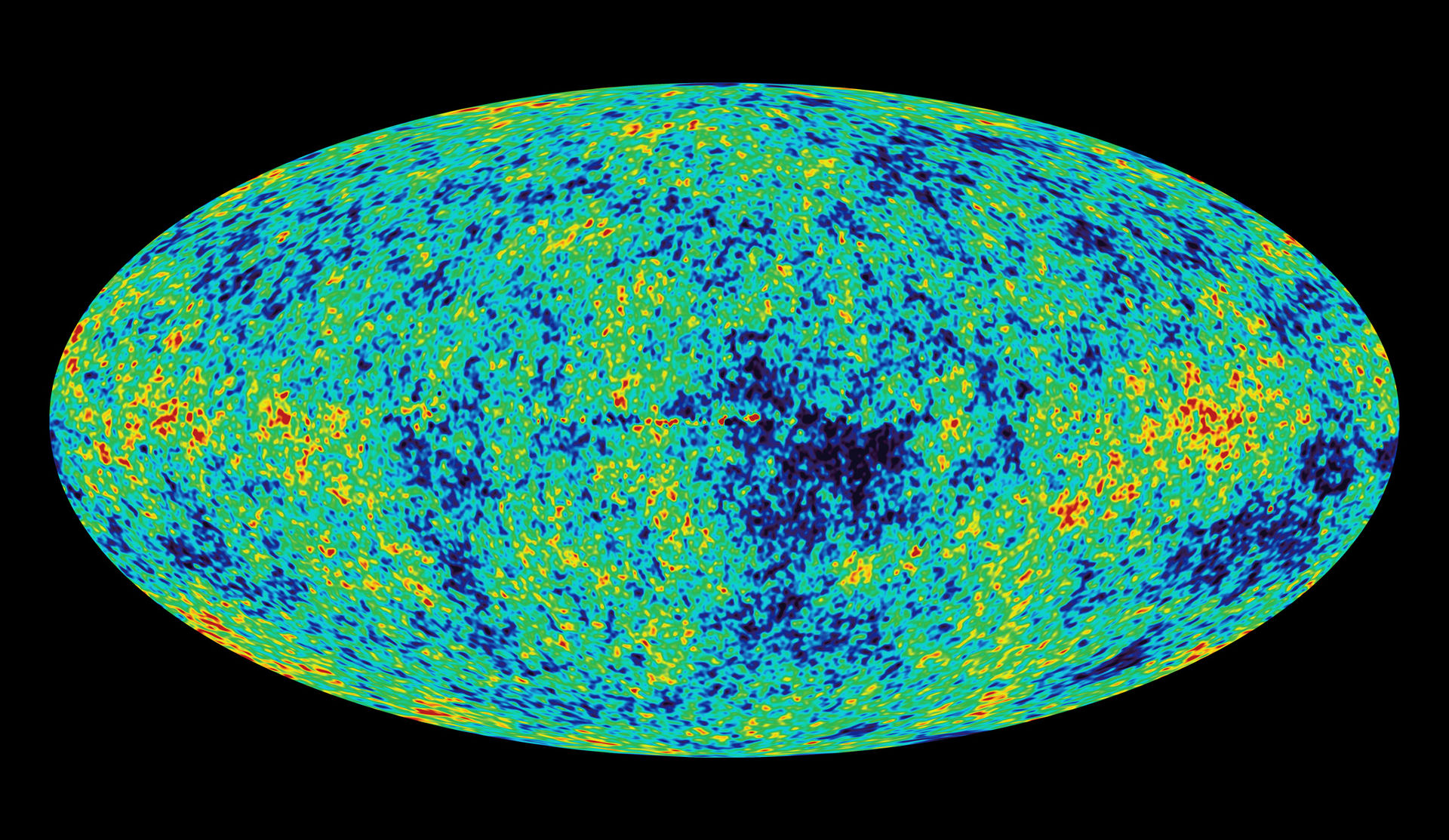竹枝詞九首‧唐‧劉禹錫
白帝城頭春草生,白鹽山下蜀江清。
南人上來歌一曲,北人莫上動鄉情。
山桃紅花滿上頭,蜀江春水拍山流。
花紅易衰似郎意,水流無限似儂愁。
江上朱樓新雨晴,瀼西春水縠紋生。
橋東橋西好楊柳,人來人去唱歌行。
日出三竿春霧消,江頭蜀客駐蘭橈。
憑寄狂夫書一紙,家住成都萬里橋。
兩岸山花似雪開,家家春酒滿銀杯。
昭君坊中多女伴,永安宮外踏青來。
城西門前灩澦堆,年年波浪不能摧。
懊惱人心不如石,少時東去複西來。
瞿塘嘈嘈十二灘,人言道路古來難。
長恨人心不如水,等閑平地起波瀾。
巫峽蒼蒼煙雨時,清猿啼在最高枝。
個里愁人腸自斷,由來不是此聲悲。
山上層層桃李花,雲間煙火是人家。
銀釧金釵來負水,長刀短笠去燒畬。
『小汽車』自洛水『小神龜』處得聞大道,若有所思乎?若有所知耶!或已先得『四知說』哩◎
詩經《大明》言
上帝臨女,無貳爾心。
,因『文』能『明』、『武』有『功』,可持守『不大聲以色』乎 !至於所謂『無知』耶?
《後漢書‧卷五十四‧楊震傳》:當之郡,道經昌邑,故所舉荊州茂才王密為昌邑令,謁見,至夜懷金十斤以遺震。震曰:『故人知君,君不知故人,何也?』密曰:『暮夜無知者。』震曰:『天知 ,神知,我知,子知。何謂無知!』密愧而出。
─── 摘自《樹莓派 0W 狂想曲︰ 不大聲以色《𝄞》》
,後『磕磕碰碰』自偏喜『竹枝詞』?因緣際會雷 ☳ 風 ☴ 一時裡,怎不出
楊柳青青江水平,聞郎江上唱歌聲。
東邊日出西邊雨,道是無晴卻有晴。
人天『吉凶』外??!!
據聞早能夜追螢火!!??
Thermography
Infrared thermography (IRT), thermal imaging, and thermal video are examples of infrared imaging science. Thermographic cameras usually detect radiation in the long-infrared range of the electromagnetic spectrum (roughly 9,000–14,000 nanometers or 9–14 µm) and produce images of that radiation, called thermograms. Since infrared radiation is emitted by all objects with a temperature above absolute zero according to the black body radiation law, thermography makes it possible to see one’s environment with or without visible illumination. The amount of radiation emitted by an object increases with temperature; therefore, thermography allows one to see variations in temperature. When viewed through a thermal imaging camera, warm objects stand out well against cooler backgrounds; humans and other warm-blooded animals become easily visible against the environment, day or night. As a result, thermography is particularly useful to the military and other users of surveillance cameras.

Thermogram of a traditional building in the background and a “passive house” in the foreground
Some physiological changes in human beings and other warm-blooded animals can also be monitored with thermal imaging during clinical diagnostics. Thermography is used in allergy detection and veterinary medicine. It is also used for breast screening, though primarily by alternative practitioners as it is considerably less accurate and specific than competing techniques. Government and airport personnel used thermography to detect suspected swine flu cases during the 2009 pandemic.[1]
Thermography has a long history, although its use has increased dramatically with the commercial and industrial applications of the past fifty years. Firefighters use thermography to see through smoke, to find persons, and to localize the base of a fire. Maintenance technicians use thermography to locate overheating joints and sections of power lines, which are a sign of impending failure. Building construction technicians can see thermal signatures that indicate heat leaks in faulty thermal insulation and can use the results to improve the efficiency of heating and air-conditioning units.
The appearance and operation of a modern thermographic camera is often similar to a camcorder. Often the live thermogram reveals temperature variations so clearly that a photograph is not necessary for analysis. A recording module is therefore not always built-in.
Non-specialized CCD and CMOS sensors have most of their spectral sensitivity in the visible light wavelength range. However, by utilizing the “trailing” area of their spectral sensitivity, namely the part of the infrared spectrum called near-infrared (NIR), and by using off-the-shelf CCTV camera it is possible under certain circumstances to obtain true thermal images of objects with temperatures at about 280 °C ( 536 °F ) and higher.[2]
Specialized thermal imaging cameras use focal plane arrays (FPAs) that respond to longer wavelengths (mid- and long-wavelength infrared). The most common types are InSb, InGaAs, HgCdTe and QWIP FPA. The newest technologies use low-cost, uncooled microbolometers as FPA sensors. Their resolution is considerably lower than that of optical cameras, mostly 160×120 or 320×240 pixels, up to 1024×768[3] for the most expensive models. Thermal imaging cameras are much more expensive than their visible-spectrum counterparts, and higher-end models are often export-restricted due to the military uses for this technology. Older bolometers or more sensitive models such as InSb require cryogenic cooling, usually by a miniature Stirling cycle refrigerator or liquid nitrogen.
若問誰曉『□在做,○在看』,世間『第一車』☆
宇宙微波背景輻射
宇宙微波背景(英語:CMB, cosmic microwave background,又稱3K背景輻射)是宇宙學中「大爆炸」遺留下來的熱輻射。在早期的文獻中,「宇宙微波背景」稱為「宇宙微波背景輻射」(CMBR)或「遺留輻射」,是一種充滿整個宇宙的電磁輻射。特徵和絕對溫標2.725K的黑體輻射相同。頻率屬於微波範圍。宇宙微波背景是宇宙背景輻射之一,為觀測宇宙學的基礎,因其為宇宙中最古老的光,可追溯至再復合時期。利用傳統的光學望遠鏡,恆星和星系之間的空間(背景)是一片漆黑。然而,利用靈敏的輻射望遠鏡可發現微弱的背景輝光,且在各個方向上幾乎一模一樣,與任何恆星,星系或其他對象都毫無關係。這種光的電磁波譜在微波區域最強。1964年美國射電天文學家阿諾·彭齊亞斯和羅伯特·威爾遜偶然發現宇宙微波背景[1][2],於1940年代開始研究,並於1978年獲得諾貝爾獎。
- 「宇宙微波背景是我們宇宙中最古老的光,當宇宙剛剛380,000歲時刻在天空上。它顯示出微小的溫度漲落,對應著局部密度的細微差異,代表著所有未來的結構,是當今的恆星與星系的種子」[3]
宇宙微波背景很好地解釋了宇宙早期發展所遺留下來的輻射,它的發現被認為是一個檢測大爆炸宇宙模型的里程碑。宇宙在年輕時期,恆星和行星尚未形成之前,含有緻密,高溫,充滿著白熱化的氫氣雲霧電漿。電漿與輻射充滿著整個宇宙,隨著宇宙的膨脹而逐漸冷卻。當宇宙冷卻到某個溫度時,質子和電子結合形成中性原子。這些原子不再吸收熱輻射,因此宇宙逐漸明朗,不再是不透明的雲霧。宇宙學家提出中性原子在「再復合」時期形成,緊接在「光子脫耦」之後,即光子開始自由穿越整個空間,而非在電子與質子所組成的電漿中緊密的碰撞。光子在脫耦之後開始傳播,但由於空間膨脹,導致波長隨著時間的推移而增加(根據普朗克定律,波長與能量成反比),光線越來越微弱,能量也較低。這就是別稱「遺留輻射」的來源。「最後散射面」是指我們由光子脫耦時的放射源接收到光子的來源點在空間中的集合。
因為任何建議的宇宙模型都必須解釋這種輻射,因此宇宙微波背景是精確測量宇宙學的關鍵。宇宙微波背景在黑體輻射光譜的溫度為2.72548±0.00057 K。[4]光譜輻射dEν/dν的峰值為60.2 GHz,在微波頻率的範圍內。(若光譜輻射的定義為dEλ/dλ,則峰值波長為1.063公釐。)
該光輝在所有方向中幾乎一致,但細微的殘留變化展現出各向異性,與預期的一樣,分布相當均勻的熾熱氣體已經擴大到目前的宇宙大小。特別的是,在天空中不同角度的光譜輻射包含相同的各向異性,或不規則性,隨區域大小變化。它們已被詳細測量,若有因物質在極小空間的量子微擾而起的微小溫度變化,且膨脹到今日可觀測的宇宙大小,應該會與之吻合。這是一個非常活躍的研究領域,科學家同時尋求更好的數據(例如,普郎克衛星)和更好的宇宙膨脹初始條件。雖然許多不同的過程都可產生黑體輻射的一般形式,但沒有比大霹靂模型更能解釋漲落。因此,大多數宇宙學家認為,宇宙大霹靂模型最能解釋宇宙微波背景。
在整個可視宇宙中有高度的一致性,黯淡卻已測得的各向異性非常廣泛的支持大霹靂模型,尤其是ΛCDM模型。此外,威爾金森微波各向異性探測器[5]及宇宙泛星系偏振背景成像[6]實驗觀測相距大於再復合時期之宇宙視界角尺度上漲落間的相關性。此相關可能為非因果的微調,或因宇宙暴脹產生。[7][8]

根據WMAP對宇宙微波背景輻射的觀測所繪製的圖像。

